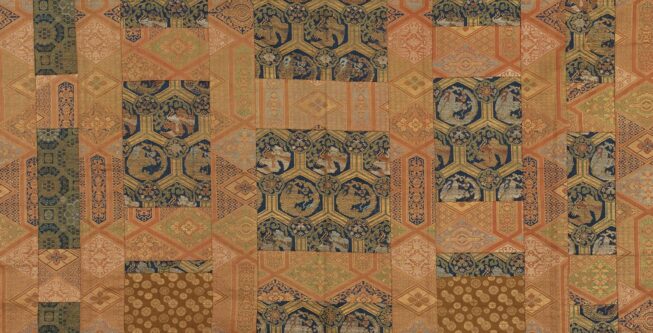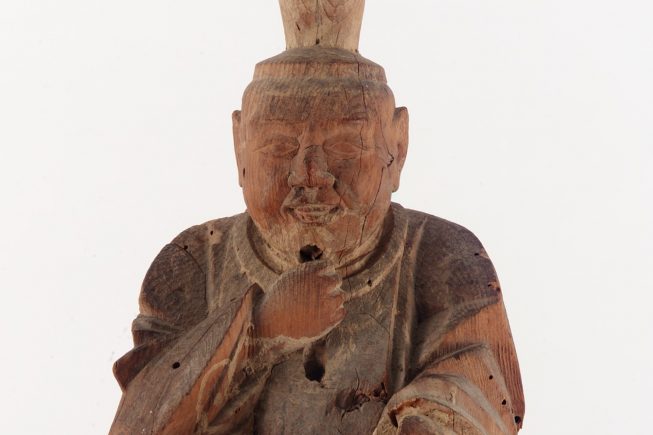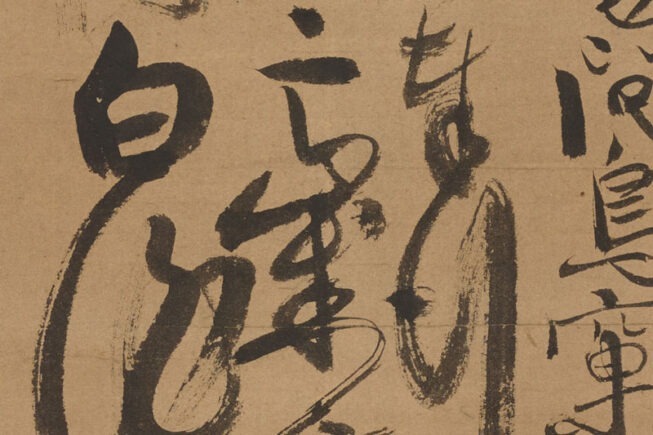March 5, 2022–July 24, 2022
-
Dates
-
Location
Freer Gallery of Art
-
Collection Area
Japanese Art
This exhibition showcases the breadth of the museum’s medieval Zen collections, highlighting rare and striking works from Japan and China to illustrate the visual, spiritual, and philosophical power of Zen. Rooted in the culture of medieval Japan, the lessons of Zen have become an important part of contemporary American life, as applicable today as they were in premodern times.
Monastic Zen painting in medieval Japan (ca. 1200–1600) is one of the great artistic traditions of East Asia and of the world. The abbreviated, seemingly impromptu paintings in monochrome ink have influenced artists and enthusiasts for centuries. Many of the most accomplished artists of this era—Mokuan, Ryōzen, Shūbun, Sesshū, Sesson, and many others—were Zen monks credited by later generations as the creators of a unique and remarkable legacy of ink painting. Indeed, Zen monk-painters inspired a number of the most important professional painting lineages of Japan’s early modern period (ca. 1600–1868) and formed a thematic backbone of Japanese art and cultural identity in modern times.
The Freer Gallery of Art has one of the greatest collections representing this tradition anywhere in the world, and its full scope will be shown for the first time since the museum’s founding a century ago.
To learn more about some of the key aspects of Zen, an online interactive experience Voices of Zen: Contemporary Voices will accompany the exhibition. High school students from Washington, DC, award-winning koto musician Yumi Kurosawa, Zen priest Reverend Inryū Bobbi Poncé-Barger, and curator Frank Feltens offer their modern-day perspectives on three important medieval Japanese works.
The interactive features three artworks from the exhibition—a splashed-ink landscape by the sixteenth-century artist Sōen, dynamic calligraphy by the rebellious monk Ikkyū, and an early sixteenth-century tea bowl fixed using kintsugi repair.
Mind Over Matter: Zen in Medieval Japan is part of The Arts of Devotion, a five-year initiative at the National Museum of Asian Art dedicated to furthering civic discourse and understanding of religion. This program is made possible by
Generous support for this exhibition and for the museum’s Japanese art program is provided by
Explore this exhibition
Music From Japan: Teruhisa Fukuda, shakuhachi, and Shihou Kineya, shamisen

Moment of Zen: Buddhist Teachings for Turbulent Times
How does an ink painting come together?
This short animation offers a glimpse at the process of making an ink painting like those in this exhibition. Follow each line as it is added to the paper. Notice how the artist paints each shade of ink separately and how the different, abstract strokes finally come together to form the image. At the very end, you will also see how the original light color of the paper has darkened over the centuries.
Voices of Zen: Contemporary Perspectives on Medieval Japanese Zen

More Videos
Exhibition Highlights
Keep Exploring
-

A Journey of Taste: Freer and Japanese Scroll Mounting
April 15, 2023–March 3, 2024
-

Religious Art of Japan
December 18, 2002–January 4, 2015
-

The Beginnings of Buddhism in Japan
October 14, 2017–October 28, 2018
- Jump To...







